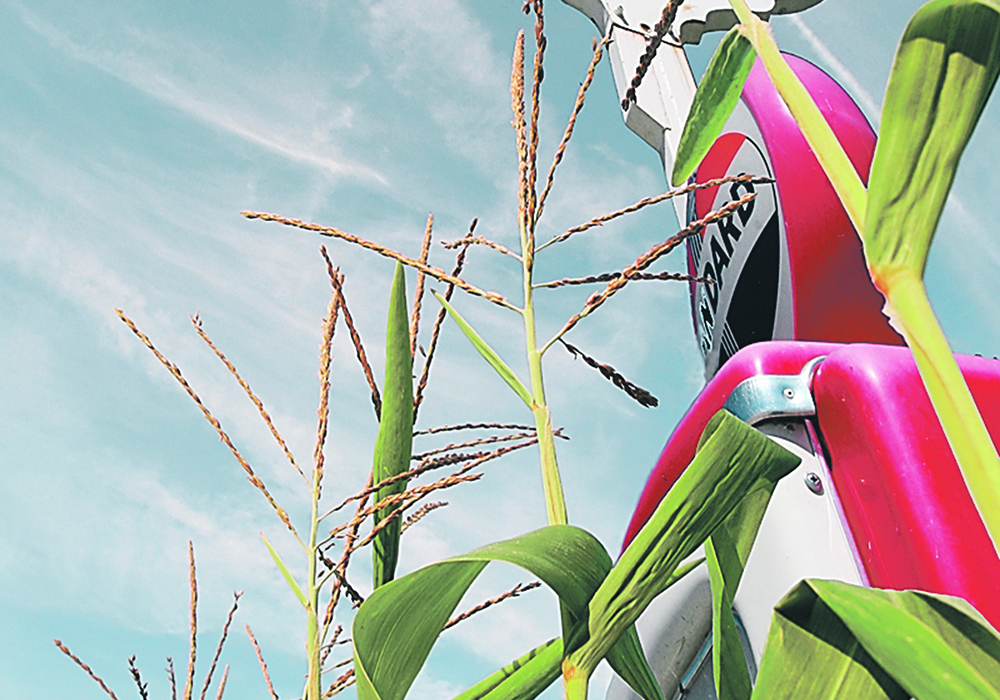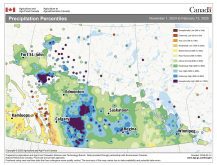U.S. corn stocks-to-use ratio is expected to inflate to a bloated 29 percent next crop year, shredding already low prices
Corn prices are going to tank in 2020-21, according to a leading agricultural economist from the United States corn belt.
The U.S. Department of Agriculture forecasts a little more than two billion bushels of U.S. corn carryout in 2019- 20, resulting in a 15 percent stocks-to-use ratio.
Jim Mintert, director for the Center for Commercial Agriculture at Purdue University, thinks there is a real risk the ratio will be closer to 17 or 18 percent due to dismal sales to the ethanol sector.
That would mean that cash corn prices that have already plummeted 16 percent since March 1 are going to drop even further by the end of the crop year.
Read Also

Prairies have variable soil moisture conditions
The dry weather in the west was welcome for preserving grain quality and advancing harvest, but it has resulted in very dry soil moisture conditions.
And next year’s price outlook is downright ugly by comparison. Slumping corn prices could weigh down wheat and other crop prices as well.
Mintert believes the U.S. corn stocks-to-use ratio will inflate to a bloated 29 percent next crop year.
“It’s a carryover level that we haven’t seen since the late 1980s,” he said during a recent webinar organized by the university.
He noted that the average cash corn price is expected to be about US$3.35 per bushel with a 15 percent stocks-to-use ratio. He shudders to think what it will be at 29 percent.
“That’s a scary number from the industry’s perspective and one that we certainly were not anticipating just a few weeks ago,” said Mintert.
The biggest problem is faltering demand from the ethanol sector. He estimated it is operating at 50 to 60 percent of capacity due to COVID-19 travel restrictions and unthinkably low crude oil prices.
Purdue University forecasts between a 350- and 640-million bushel reduction in corn demand from the ethanol sector in 2019-20.
There are also concerns with livestock feed demand as COVID-19 has caused a shift from restaurant to grocery store demand for meat products. That and lower household incomes have greatly reduced demand for the more expensive cuts of meat.
Now add into the mix the USDA’s forecast that U.S. corn farmers are going to plant 97 million acres of the crop, an eight percent increase over last year.
That forecast was made before the collapse of the ethanol sector. Mintert thinks corn will lose some acres to soybeans but not as much as some people are thinking because farmers have already made plans and purchased seed.
He forecasts 96 million acres of corn. With trend line yields of 177 bushels per acre, that would result in a record 15.6 million bushels of production on top of an ever-growing carryout from 2019-20.
The University of Missouri projects an average national U.S. cash corn price of $3.35 per bushel in 2020-21, down from its previous forecast of $3.70.
“I personally think that might be optimistic,” said Mintert.
Corn demand in Canada could be soft as well due to similar problems with the biofuel sector.
Renewable Industries Canada and Husky Energy were contacted to provide a Canadian ethanol perspective but neither responded in time to meet Western Producer deadlines.
Ian Thomson, president of Advanced Biofuels Canada, a group that represents biodiesel and other advanced biofuel companies, said the situation is similar south of the border.
He noted that biodiesel hasn’t been hit as hard as ethanol.
According to the U.S. Energy Information Administration, gasoline production fell 40 percent between Jan. 1 and April 17. Distillate fuel oil production, which includes diesel, is down 20 percent over that same time frame.
Thomson figures the ratios are about the same for ethanol and biodiesel, with biodiesel experiencing half as much of a decline in production.
Thomson doesn’t know how individual biodiesel producers are doing because the impact depends on the size of their operations and the region where they are located, but in general COVID-19 hasn’t been good for the biofuel sector.
“There has been some curtailment,” he said.
















